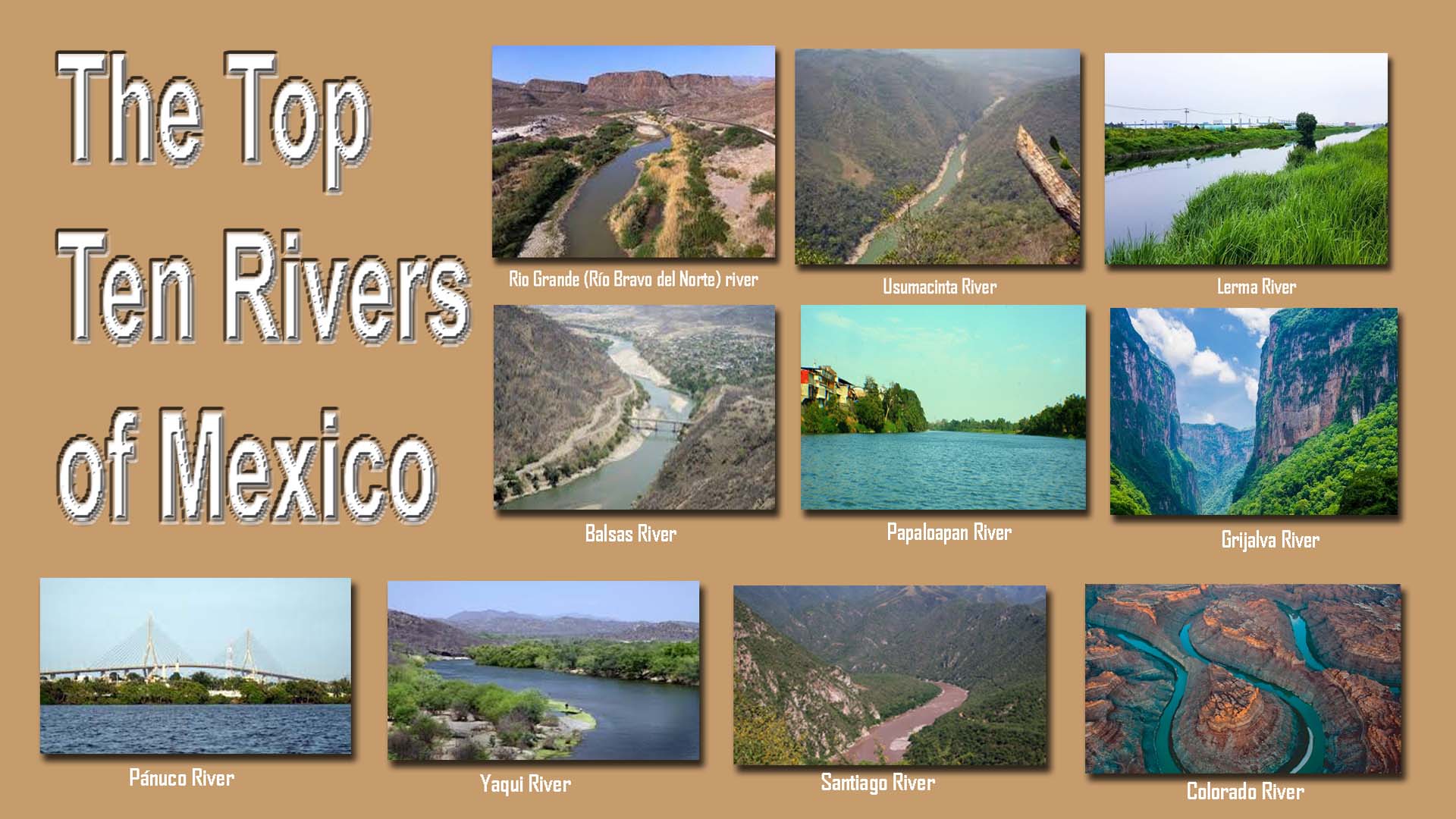

 The Top Ten Rivers of Mexico
The Top Ten Rivers of Mexico
Mexico, with its diverse landscapes ranging from arid deserts to lush rainforests, is home to numerous rivers that play vital roles in its ecology, economy, and culture. Here are the top ten rivers of Mexico, each significant in its unique way:
1. Rio Grande (Río Bravo del Norte)
The Rio Grande, known in Mexico as the Río Bravo del Norte, is one of the most iconic rivers in North America. Stretching over 3,000 kilometers, it forms a natural border between the United States and Mexico. This river is crucial for irrigation, agriculture, and as a water source for communities along its course. Major cities along its banks include Ciudad Juárez and Reynosa.
2. Usumacinta River
The Usumacinta River, the largest river in terms of discharge volume in Mexico, flows through the states of Chiapas and Tabasco before entering Guatemala. It is known for its rich biodiversity and archaeological significance, with many ancient Mayan sites located along its banks, such as Yaxchilán and Piedras Negras.
3. Lerma River
The Lerma River, at approximately 750 kilometers, is one of the longest rivers entirely within Mexico. Originating in the State of Mexico, it flows through the states of Querétaro, Michoacán, Guanajuato, and Jalisco before emptying into Lake Chapala, Mexico’s largest freshwater lake. The Lerma River basin is an essential agricultural region, producing a significant portion of the country’s crops.
4. Balsas River
Flowing through the states of Guerrero and Michoacán, the Balsas River is a major waterway in southern Mexico. Spanning about 770 kilometers, it is vital for agriculture, hydroelectric power, and provides water for numerous communities. The Balsas basin supports a variety of ecosystems and is home to many endemic species.
5. Papaloapan River
The Papaloapan River, often called the “River of the Butterflies,” flows through the states of Oaxaca and Veracruz. It is approximately 354 kilometers long and is crucial for the region’s agriculture, supporting the cultivation of sugar cane, coffee, and tropical fruits. The river’s delta is a rich ecological zone with diverse flora and fauna.
6. Grijalva River
Originating in Guatemala and flowing into Mexico, the Grijalva River traverses the states of Chiapas and Tabasco. It is approximately 480 kilometers long and plays a significant role in hydroelectric power generation, particularly at the Chicoasén, Malpaso, and Peñitas dams. The river also supports extensive agricultural activities and fisheries.
7. Pánuco River
The Pánuco River is one of the primary rivers in northeastern Mexico, flowing through the states of San Luis Potosí, Tamaulipas, and Veracruz. With a length of about 510 kilometers, it drains into the Gulf of Mexico. The river is historically significant, having been a crucial waterway during the colonial period, and continues to support regional agriculture and industry.
8. Yaqui River
Located in the state of Sonora, the Yaqui River is around 320 kilometers long. It is essential for the region’s agriculture, particularly for the irrigation of crops like wheat, maize, and vegetables. The river has also been a focal point in the cultural and historical context of the Yaqui people.
9. Santiago River
The Santiago River, originating from Lake Chapala, flows through the states of Jalisco and Nayarit. Spanning about 433 kilometers, it is important for hydroelectric power, with several dams along its course. The river also supports local agriculture and provides water for Guadalajara, one of Mexico’s largest cities.
10. Colorado River
The Colorado River, which flows from the Rocky Mountains in the United States into Mexico, ends in the Gulf of California. In Mexico, it primarily flows through the state of Baja California. Although its flow has been significantly reduced due to extensive damming and water extraction upstream, it remains crucial for irrigation and sustains the ecologically significant Colorado River Delta.
Conclusion
These rivers are more than just geographical features; they are lifelines that support the environmental health, economic activities, and cultural heritage of Mexico. Protecting and managing these vital waterways is essential for ensuring the sustainable development and ecological balance of the regions they traverse.